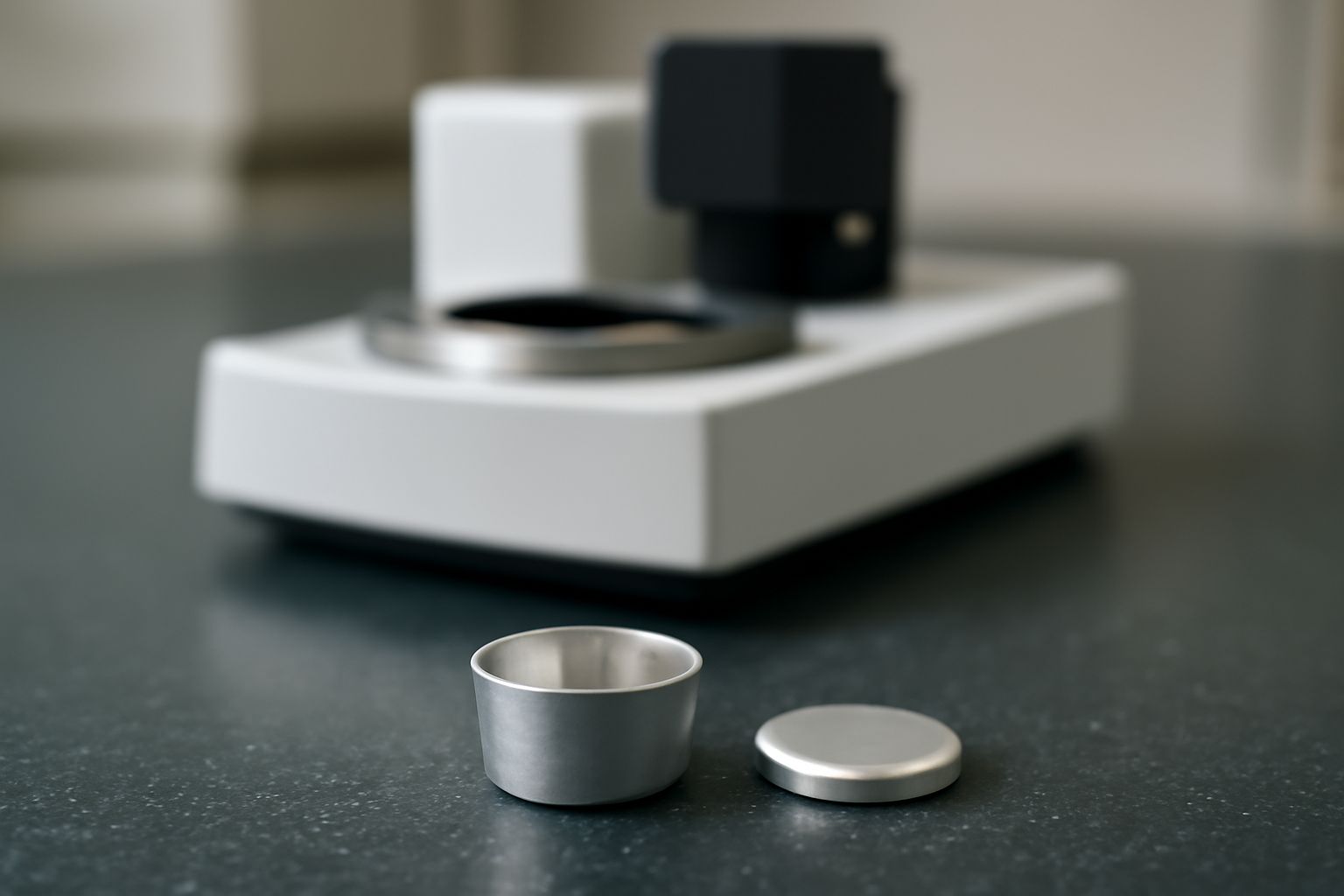Your cart is empty.
shop now
Your cart is empty.
shop now
Hidden technical choices can make or break reliable lab results. Knowing each container’s specification protects your work and saves time in every thermal analysis project.
The accuracy of a thermal analysis depends on choosing sample containers with the right material, size, and thermal resistance. Matching these specifications ensures trustworthy results for DSC and TGA tests, improving laboratory outcomes and research quality.

I pay close attention to every detail in my lab purchases. The material, volume, and sealing style of a sample container often determine the confidence I have in my test data. A small difference in specification becomes a big advantage when accuracy matters in industrial and academic research.
Using the correct material avoids unwanted chemical reactions and ensures heat reaches the sample uniformly. Different thermal analysis tests require specific container materials.
Aluminum, alumina, platinum, and gold-coated containers each offer unique properties in thermal conductivity and chemical stability. The material you choose should match the intended test and resist breakdown under high-temperature or harsh sample conditions.
| Material | Technical Benefit | Further Resource |
|---|---|---|
| Aluminum | High conductivity, lightweight, suits most DSC applications | Aluminum |
| Alumina | Handles high temperatures, non-reactive, ideal for TGA | Alumina |
| Platinum | Extreme heat resistance, suits corrosive and sensitive samples | Platinum |
| Gold-Coated | Improves inertness for the most sensitive analyses | Gold |
Sample container size affects heating rates, sample distribution, and test sensitivity. Picking the wrong size risks overflows, uneven heating, or incorrect readings.
I match container volume to sample weight and instrument limitation charts. Small containers increase response speed, while large pans suit foamy or volatile materials. Manufacturers provide clear specifications for every pan type in their catalogs and technical sheets.
| Container Type | Size/Volume Range | Read More |
|---|---|---|
| Standard Aluminum Pan | 6-40 μL, 50-100 mg sample size | Calorimeter |
| Alumina Crucible | 30-150 μL, up to 200 mg | Crucible |
| Sealed Pan | 5-30 μL, 1-50 mg | Sealing |
| Custom Size | User-defined, for special projects | Laboratory Sample |
High accuracy in thermal analysis requires pans and crucibles to retain shape and performance at target temperatures. Proper sealing also prevents sample loss and contamination.
Each container type offers different limits for heat exposure and sealing effectiveness. Platinum and alumina can handle the highest temperatures, while sealed pans protect volatile samples. Matching these traits to your analysis keeps results consistent and safe.
| Material | Temp. Resistance | Sealing Option |
|---|---|---|
| Aluminum | To 600°C | Crimp, O-ring |
| Alumina | To 1600°C | Open, with cover |
| Platinum | To 1700°C | Open, reusable lid |
| Sealed (any material) | Limited by pan material | Hermetic, vented, O-ring |
Not all tests fit the same mold. Sometimes a standard pan cannot fit a unique project or instrument, so custom options become necessary.
I review project needs against standard catalogs. For unusual samples or extreme environments, I send drawings or specifications to have custom containers made. Customization might mean different shapes, rare materials, or special seals, allowing exact fit for demanding research.
| Container Type | Advantage | Limitation |
|---|---|---|
| Standard | Readily available, cost-effective, tested compatibility | Limited to common sizes and shapes |
| Custom | Matches exact sample, can use special materials or seals | Longer lead time, minimum order required |
| Hybrid | Standard base, custom lid or modifications | May need additional validation |
| Retrofitted | Allows use of non-standard instruments | Engineer guidance needed |
Reliable thermal analysis results depend on understanding container specifications. Picking proper material, size, and features helps me deliver trusted data for every lab and research project.
Contact Technical Support >